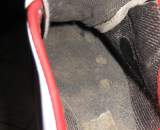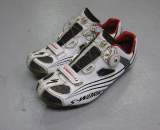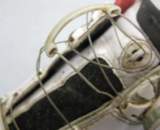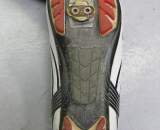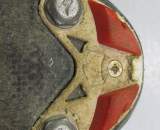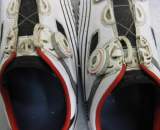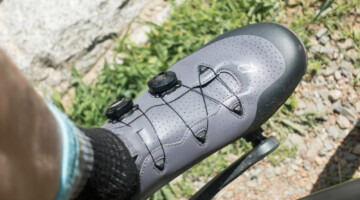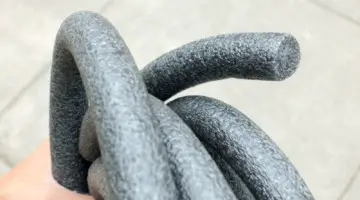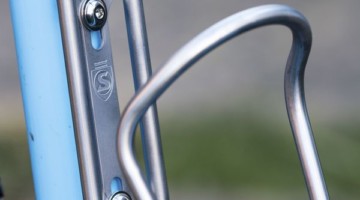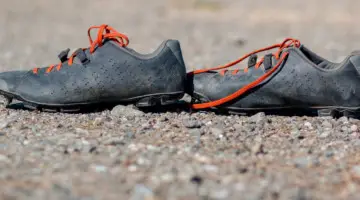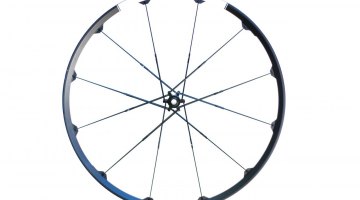Cyclocross Magazine’s year-long search for the perfect cyclocross shoe continues with Day 6 of Shoe Week. We look at Specialized’s top offering, the not-yet-released 2010 S-Works MTB. Missed our previous features? Catch up on Day 5’s Winter Shoe Roundup.
by Lane Miller
Specialized’s “S-Works” moniker is reserved for those products reflecting the leading edge technology, be it bicycles, helmets or, in this case, shoes. For the past few years, Specialized has offered an S-Works model of their offroad shoe, designed to hit that magical balance of fit, stiffness and weight for those riders seeking every advantage, even in their footwear. While early refinements to the original S-Works MTB shoes involved the BOA system securing the shoe, 2010 brings more drastic improvements.
The Tech
The fundamental technology underlying all of Specialized’s shoes, the Body Geometry (BG) developed in partnership with Andy Pruitt and the Boulder Center for Sports Medicine, is certainly present in their flagship mountain shoe. Although we’ve touched on the BG system in our SHOE REVIEW, I’ll give some additional highlights. The footbed itself is more substantial than those found in other manufacturers’ models and it features a noticeable longitudinal arch as well as a roughly-triangular “bump” (the metatarsal button) behind the toe/forefoot area. The shoe itself features a slight angling of the sole placing the big toe ever-so-slightly higher than the little toe. Together, these features help place and keep your foot in a more natural or neutral position throughout each pedal stroke and help to improve both comfort and cycling efficiency.
On top of this foundation is a shoe packed with technology. The uppers are constructed of a supple synthetic leather and superthin mesh. A BOA lace system and a single Velcro strap make for a super-secure fit at less weight than the typical high-end Velcro-and-buckle setup. One nifty feature on the Specialized BOA system is a small U-shaped plastic piece that both serves as a quick pull to loosen the laces and helps keep the laces themselves from twisting or corkscrewing when tightening or releasing (which was a small but annoying problem with earlier versions of this shoe). The mesh side panels are almost gossamer-like, very open and airy, while a bit thicker mesh panel on the top of the shoe near the toe presumably offers extra protection from the occasional impact or snag (or for ‘cross, extra protection from cold, wind and water). Other near-standard features for high-end MTB shoes, like padded tongues reinforced toe bumpers, are present here as well.

Midsole stomp pad protects the carbon sole and adds some extra grip for those lactate-fog moments © Lane Miller
The sole is full carbon, thin (for MTB shoes) going from 6.5 to 8mm outside to inside (due to the Varus wedge), and features what Specialized calls their “Torsion Box” technology, meaning there’s a hollow box section in the middle. This yields a super-stiff sole while cutting out some weight. The hollow box also allows the sole to resist some of the side-to-side twist (or “torsion,” get it?) from stomping down on the pedals: holeshots, corners, you know the drill. Effectively, the sole of this shoe is the sole used in Specialized’s 2009 Pro Road shoe, which on their stiffness scale of “1” to “10” goes to “11.” Features like the new sole come directly from the feedback Specialized solicits from their top-tier pro riders like mountain biker Christoph Sauser. The tread blocks are arguably minimal (likely to help save weight), but also replaceable, from the toe studs to the heel. Most of the tread’s fasteners are located inside the shoe, so there’s no risk of a bolt dropping out somewhere on the racecourse. A small thing, but indicative of Specialized’s attention to detail in the shoe’s design. All of this adds up to an stiff, lightweight shoe, my pair weighed in at 616 grams for the pair (size 42.0)! That’s lighter than some road shoes, for those counting!
Great! But How Do They Work?

Toe studs have the only external bolt mounts. Note the alloy toe blanks - gotta be lighter! © Lane Miller
I’ve used Specialized shoes for several years now, so the fit is familiar to me. The shoes give what I would call a “snug American” fit, with more room in the toebox than you might find in some European brands. My Specialized 42.0, equating to a US size 9, is a pretty “true” fit. They’re roomy enough to accommodate thicker footbeds, orthotics or, perhaps more practically, thicker wool socks for true cross weather. The BOA laces deliver a nice, even feel when you snug them down and the improved dial design (similar to the one found on the Lake MX170 reviewed earlier this week) has a solid, positive feel when you tighten them. With a little practice, it’s not hard to adjust them while riding without loosening the laces. While putting the BOA on the outside of the shoe might seem like it would make the dial vulnerable, mine still work just fine, even after a few solid collisions with obstacles. For those who prefer a more positive “in shoe” feel, there’s a unique feature called the “PowerZone” that allows you to double up the BOA lace for a more secure grip over the tongue.
The supple material of the upper and the nice, even feel of the BOA system gives this shoe a “glove like” (or “slipper like?”) fit, on par with any boutique Euro brand. The inside of the shoe is well-finished, no bumps or irregularities to interfere with insoles, socks, etc.. Even the mounting holes for the tread blocks are neat and clean. The finish on the shoe is a sort of “patent leather” look, and with the oh-so-PRO white finish, these are kicks that will get you noticed on the start line. Whether or not that attention is a good thing is another matter entirely.
I was worried that the airy mesh side panels would impact the shoe’s performance in the colder weather but even when riding into work this week near Boulder, Colorado, where the morning lows were under ten degrees, my dogs were pretty toasty in just the shoes and some thick wool socks.
When riding with the shoes, the first thing I noticed was the sole’s stiffness. There is simply an immediate, “connected” feel when you push on the pedals. Sole stiffness as it relates to cross is an arguable and contested issue, but for me it’s hard to argue against that solid response when you are cranking at speed. When I hear Specialized talk about Sauser’s input in the shoe design, it makes me think that many of these guys aren’t just riding these super-stiff shoes because they’re sponsored, but because the top honches are asking for these features. Wearing them, you just have no question about where your effort is going. That’s a good thing during a race. Admittedly, I think a key factor in being able to run a stiff shoe is making sure that your foot is properly supported (which is where the BG footbeds come in) but, when that’s dialed, a stiff shoe is great for delivering power to the bike. So, for me, stiffer=better. Any qualms I had about using a super-stiff shoe for cross have disappeared since wearing these, even on longer on- and off- road rides.
But what about running? Wouldn’t such a stiff sole work against you as soon as you jump off the bike? After using these shoes for a few months now, so far I’d have to say, “Not really.” Compared to some of the aggro, heavy rubber treads you see on MTB shoes, you’d think that the S-Works’ tread blocks wouldn’t offer much grip when the going gets steep and slick. Honestly though, I didn’t find that to be the case. Sure, there have been run-ups with a slip or two, but none where other comrade racers haven’t had the same issues. One neat thing about the S-Works sole: Specialized incorporated a small rectangular rubber stomp pad in the midsole. No more gluing old Dugast or Challenge treads to gain some traction on runs or when your foot slips on a pedal. Nice! Ideally we’d all be as smooth as the Euro-Pros, clipping into that pedal the first time, every time. But until I get some more practice in, I’m happy for the no-slip pad, and I imagine it helps protect the sole.
Specialized has done a great job in delivering a top-notch competition shoe that have given me absolutely no problems for a full season of cross racing. That said, there are a few points to consider:
As Andrew noted in his review on the Lake MX170, under adverse conditions the BOA systems can pack up with gunk, leaving you locked in to a shoe when the last thing you wanna do is drive home from the race in your carbon-soled kicks. The quick pull on the Specializeds make this a bit less hassle, at least you aren’t pulling on a stainless steel wire wondering what’s gonna give first: shoe, lace or finger? Still, I found that if you aren’t diligent about keeping the BOA systems clean, it doesn’t take too long before they begin to feel “crunchy” when lacing or unlacing. After chatting with Specialized about this very issue, they were kind enough to forward some simple maintenance instructions from BOA that helped keep the systems feeling new, even after the harsh conditions of the Blue Sky Velo Cup and the Boulder Cup. The secret? Loosening the laces as much as possible, wiping them down and spraying good ol’ silicone lube into the guides and dials. Tighten the laces, bingo-bango, they’re better! Still, the BOA systems seem like they could take some improvement in terms of performance and durability under extreme conditions.
The next issue is, perhaps, more hypothetical: the durability on the carbon box sole. Granted, I’ve used solid carbon soles for the past several years with no cracking or delamination, however, given that the sole on this shoe is effectively hollow in the middle, I’m eyeing it a bit more than I have past shoes. These shoes also have the distinction of being the first pair on which I’ve installed the Crank Brothers Shoe Shields as a precautionary measure. Admittedly, I probably should’ve been doing that with all of my shoes these past few years.
Finally, from more of a consumer standpoint: these kicks, while nice, are far from cheap. At $350 for a pair, they’re an investment in equipment that may last only a couple of years. Granted, it’s not the near-stratospheric price point of some Euro brands, but this isn’t a shoe you’re buying “because you’re using ‘cross for your winter training.” To paraphrase a near-cliché in the bike industry: “stiff, light, cheap, pick two…”
For me, two thumbs up on these shoes. They’re light, they’re stiff and they fit my feet very well. Overall, I gotta say that if you are a serious ‘crosser and recognize how a good-fitting, light and stiff shoe can impact your performance (or at least give you one less thing to check off in your “why I didn’t win this weekend…” list), then give these shoes a good hard look.
Shoe: Specialized 2010 S-Works MTB
Weight(actual): 308 g (1/2 pair, size 42)
Sizes: 39 to 48, half sizes available from 42.5 to 45.5
Colors: White or Black
MSRP: $350.00
More info: www.specialized.com
Photo Gallery:















